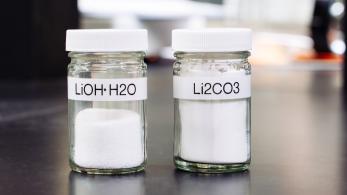February 20, 2025
Silver Peak, Nevada, has the look of a landscape from a Star Wars movie.
While it may not be the setting of an intergalactic fight for freedom, lithium from Albemarle’s Silver Peak site—the only producing lithium mine in the U.S.—does contribute to the U.S. space program.
Lithium has earned a bit of limelight recently, as more people recognize the importance of this essential element.
Less than 2% of the world’s lithium production comes from the United States today, and almost all of that is sourced from Albemarle’s Silver Peak facility, located about 200 miles northwest of Las Vegas.
The site has been producing lithium since the 1960s, playing a role in many aspects of modern life — the rise of technologies such as smartphones, aerospace and aviation, building and construction materials, and lubricating greases needed for automotives and heavy machinery.
The site features highly skilled employees with the right expertise to provide a secure supply of essential elements to customers around the world.
But Brandon Swanson, a hydrogeologist at Albemarle, humbly gives all the credit to the unique geologic features, an arid climate and abundance of sunshine.
“It’s a perfect evaporation environment,” he says, that allows Albemarle to use a solar evaporation process on the site’s lithium-enriched brines.




